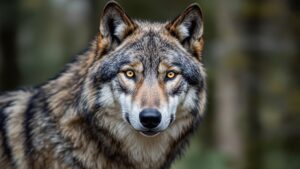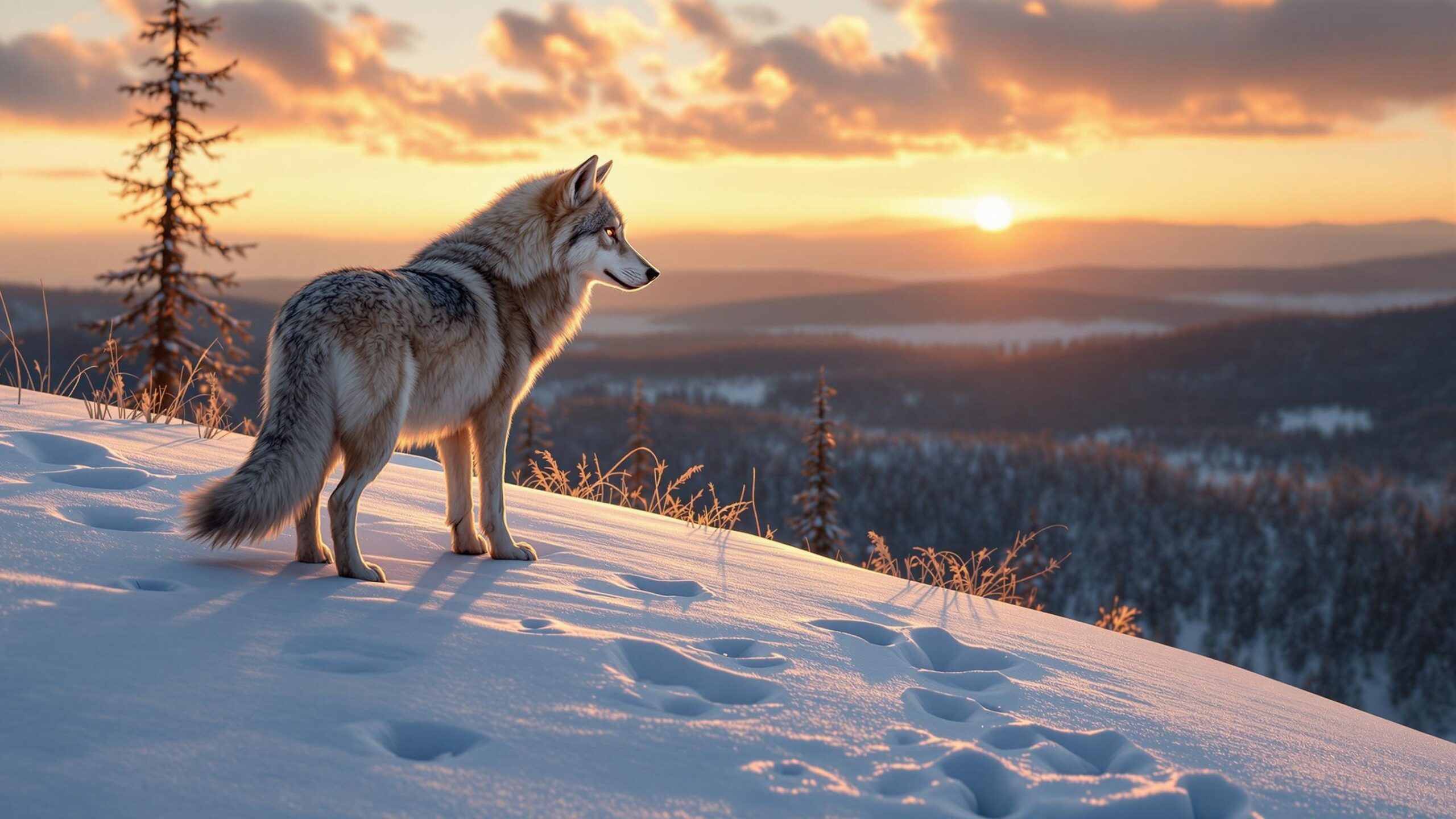Wolves: The Wild Architects of the Wilderness
There is a haunting beauty in the cry of a wolf. That long, echoing howl doesn’t just send chills down the spine—it stirs something ancient in the human soul. Wolves have captivated our imaginations for millennia, from cave paintings to mythologies, fairy tales to conservation debates. They are not just apex predators, but living symbols of wildness, resilience, and intricate social harmony. This page dives into the heart of the wolf world, exploring the remarkable biology, deep ecological importance, and fascinating diversity that defines this iconic animal. As a pillar page on wolves, it offers an expansive view into their evolutionary roots, their global subspecies, and the unique traits that make them one of the most studied and admired creatures in the natural world.

Gray Wolf
Gray Wolf: Exploring the Life, Power, and Legacy of Canis lupus The gray wolf, known scientifically as Canis lupus, is one of the most iconic and recognizable animals in the world. Revered in myths, feared in folklore, and celebrated in wildlife documentaries, the gray wolf has long captivated the human imagination. But beyond the symbolism lies a complex and fascinating predator—one that plays a critical role in ecosystems across the
Wolves and Their Place in the Canine Family
Wolves belong to the genus Canis, which also includes coyotes, jackals, and domestic dogs. Specifically, the gray wolf, Canis lupus, is the species that has spread across the widest range of environments and evolved into a multitude of subspecies adapted to a range of conditions from the Arctic tundra to the deserts of Mexico. Gray wolves are incredibly adaptable and intelligent, capable of surviving in diverse climates, hunting cooperatively in packs, and navigating complex social structures. Their powerful limbs and endurance make them elite long-distance hunters, often covering dozens of miles in a single day. But beyond their physical prowess, what truly sets wolves apart is their community—their deep bonds, hierarchical packs, and their uncanny ability to work together with precision and purpose.
Understanding the Many Types of Wolves
To understand wolves, it’s important to look at the different types or sub-groups that fall within the broader wolf family. While all are genetically close, they differ in habitat, appearance, behavior, and the roles they play in their respective ecosystems. These sub-categories include Gray Wolves, Arctic Wolves, Red Wolves, Ethiopian Wolves, and Wolf-Dog Hybrids. Each brings a unique lens to the understanding of this fascinating species, revealing both the diversity and unity that defines the wolf world.
The Gray Wolf: The Classic and Widespread Archetype
The Gray Wolf is the archetype that comes to mind when most people think of a wolf: thick fur in shades of gray and brown, piercing yellow eyes, and an imposing frame. But within the gray wolf species lies a surprising variety of subspecies, shaped by geography and evolution. The Northwestern wolf, also known as the timber wolf, thrives in the dense forests and mountainous regions of Alaska and Canada. It is one of the largest of the subspecies, often weighing over 100 pounds. Then there is the Mexican gray wolf, one of the smallest and most endangered gray wolves, with only a few hundred individuals surviving in the wild today. These wolves once roamed the American Southwest in large numbers but were driven to near extinction before reintroduction efforts began. Gray wolves as a whole are known for their structured packs, usually consisting of a breeding pair and their offspring. The pack works together to raise pups, protect territory, and take down prey such as elk, deer, and bison, displaying an extraordinary level of coordination and strategy.
The Arctic Wolf: Survivor of the Frozen North
The Arctic Wolf, a subspecies of gray wolf, lives in one of the harshest environments on Earth—the icy barrens of the Canadian Arctic and Greenland. Covered in thick white fur that helps camouflage it against snow and ice, the Arctic wolf is well adapted to cold and isolation. Food is scarce in this realm, so the Arctic wolf preys on musk oxen, Arctic hares, and caribou. Their packs tend to be smaller, and their interactions with humans far more limited due to their remote range. What makes the Arctic wolf so compelling is its resilience and the purity of its isolation. In a landscape that defeats many forms of life, these wolves have evolved into master survivalists, weathering months of darkness, extreme cold, and long hunting journeys across endless white.
The Red Wolf: A Species Shrouded in Mystery
The Red Wolf is one of the rarest and most debated members of the wolf family. Native to the southeastern United States, the red wolf is smaller than the gray wolf but larger than the coyote. It has a tawny, reddish coat, giving it its name, and historically roamed from Texas to the Atlantic coast. Due to hybridization with coyotes and relentless persecution by humans, red wolves became nearly extinct in the wild by the 1980s. Intensive captive breeding programs were initiated, and a small population was reintroduced into North Carolina. However, the red wolf’s taxonomic status remains controversial—some scientists view it as a distinct species, others as a hybrid between gray wolves and coyotes. Despite the debates, red wolves represent a unique blend of adaptability and vulnerability, symbolizing the broader conservation struggle surrounding wolves in America.
The Ethiopian Wolf: Africa’s Isolated Predator
The Ethiopian Wolf is the only wolf species native to Africa, and it is critically endangered. Found only in the highlands of Ethiopia, especially in the Bale Mountains, this wolf looks more like a jackal than its northern cousins but behaves in ways strikingly similar to other wolves. Ethiopian wolves live in small social groups but primarily hunt alone, feeding on rodents and small mammals found in the grasslands of the Ethiopian plateau. Their rusty red coats, slender builds, and specialized teeth make them highly adapted to their niche. These wolves are a testament to evolution’s power to craft survival strategies in extreme isolation. Unfortunately, habitat loss, diseases from domestic dogs, and human encroachment have placed the Ethiopian wolf on the brink of extinction. Their plight serves as a stark reminder of the fragility of biodiversity in the face of human expansion.
Wolf-Dog Hybrids: A Blend of Wild and Tame
Wolf-Dog Hybrids form a modern and complex category. They are the result of interbreeding between domestic dogs and wild wolves and are often bred intentionally by humans seeking animals that combine the loyalty of a dog with the wild allure of a wolf. These hybrids vary widely in appearance, temperament, and behavior depending on the percentage of wolf ancestry and the dog breed involved. Some wolf-dog hybrids retain a strong prey drive, aloofness, and escape instincts, making them challenging to own as pets. Others may be more docile and trainable. The legal status of wolf-dogs varies by region, with some areas banning them altogether due to safety concerns. From a biological perspective, wolf-dogs highlight the genetic closeness between wolves and dogs—so close, in fact, that they can interbreed and produce fertile offspring. But from a social and ethical standpoint, they underscore the complicated relationship humans have with wildness, domestication, and control.
Common Threads: What Unites All Wolves
Beyond the physical distinctions among these sub-categories, wolves across all types share a few essential characteristics that define them as a species. Wolves are intensely social animals, living in packs that are more family than group. They communicate through a rich tapestry of body language, vocalizations, and scent marking. Their howls, far from being random cries, serve a multitude of purposes: rallying the pack, warding off rivals, and expressing loneliness or unity. Wolves are also ecological linchpins. As apex predators, they help regulate prey populations and maintain the balance of their ecosystems. The reintroduction of wolves to Yellowstone National Park is a prime example: it not only reduced overgrazing by elk, but also allowed vegetation to recover, which in turn benefited other species, reshaped river paths, and revitalized the entire landscape—a phenomenon known as a trophic cascade.
Wolves in Culture and Conservation
Culturally, wolves occupy a vast symbolic space in the human psyche. In some cultures, they are revered as spiritual guides, clan symbols, or teachers of loyalty and leadership. In others, they are feared as threats, depicted as villains in fables and films. This duality—admiration and fear, respect and revulsion—mirrors our own inner conflict with nature. Wolves are a mirror of our relationship with the wild. When we protect them, we protect a vital piece of the natural puzzle. When we threaten them, we risk unraveling ecosystems and losing part of our collective imagination.
There’s also growing fascination with wolf conservation, not just among scientists and activists but within the general public. Wildlife tourism centered on wolf watching has exploded in areas like Yellowstone, where people come from all over the world to catch a glimpse of a pack trotting across a snowy ridge or hear the resonant howl of a lone wolf at dusk. Organizations work tirelessly to educate communities, resolve human-wolf conflicts, and advocate for legal protections. Genetic studies continue to unravel the evolutionary history of wolves, revealing migrations, adaptations, and interbreeding events that shaped their lineage. In every way, wolves are a biological and symbolic keystone—a creature both ancient and modern, wild and familiar.
The Journey Continues: Your Exploration Starts Here
As you finish reading this broad exploration into the world of wolves, you might find yourself feeling the magnetic pull they’ve always had on humanity. Whether it’s the mystery of a lone howl at night, the thrill of seeing a paw print in fresh snow, or the fascination with their intricate social lives, wolves have a way of igniting curiosity. But this overview is only the beginning. Each category within the wolf family holds deeper stories, unique challenges, and evolving roles in a rapidly changing world. From the ghost-white Arctic wolf to the embattled Ethiopian wolf, from the fiery red wolf of the American Southeast to the hybrid puzzle of wolf-dogs, there is so much more to explore, understand, and protect.
This is your gateway to a larger journey. Dive into the specific stories of each sub-group. Learn how gray wolves communicate and raise their pups. Discover how Arctic wolves adapt to the frigid extremes. Understand the controversy behind red wolf genetics or follow the urgent rescue mission for the Ethiopian wolf. The world of wolves is wild, complex, and breathtaking. And it’s waiting for you to explore it.

